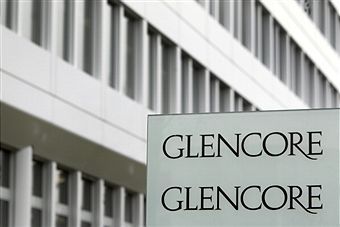Glencore International plc filed today an announcement detailing the terms of its proposed US$9 billion to US$11 billion flotation on the LSE and the Stock Exchange of Hong Kong. The filing reveals a transaction mainly comprised of new shares to be issued, as well as the prominent role played in the deal by Morgan Stanley and Citi.
The deal, which is expected to represent between 15% and 20% of Glencore’s post-IPO issued share capital, will primarily take the form of new shares, for approximately US$6.8 billion to US$8.8 billion, with a secondary sale by existing shareholders for US$2.2 billion. This could bring the total deal size to up to US$11 billion. A 10% over-allotment option could further increase it to US$12.1 billion.

The sell-down is being made to cover existing shareholders’ expected individual tax liabilities and loans. Shareholders will also be subject to lock-up arrangements, phased but of up to five years in the case of executive directors, thereby providing comfort to market participants that the partners in Glencore do not intend to immediately cash-in on their holdings through the IPO.
New issue proceeds are expected to be applied towards Glencore increasing its ownership in JSC Kazzinc (US$2.2 billion); funding capital expenditure for the next three years, including expansion projects (US$5 billion); as well as debt reduction.
(Click HERE to access the page on the initial public offering on Glencore’s website)
As expected, the primary listing will be on the Main Market of the LSE, with a secondary listing in Hong Kong. There, as in London, shares rather than Hong Kong depositary receipts, will be offered. Glencore is also expected to enter the FTSE 100 index after its first day of trading in London, at the end of May, under the “fast entry” rule. Glencore would be the first company in 25 years, and only the third-company ever, to do so. This should bring ample trading support from index-driven, institutional demand in the aftermarket.
The deal will include a global institutional tranche, including through a private placement under Rule 144A in the US, as well as an offering to retail investors in Hong Kong.
There are few surprises with the syndicate, although Morgan Stanley in particular, as well as Citi appear to have cornered all the key roles.
Citi, Credit Suisse and Morgan Stanley have been appointed as joint global coordinators and, together with BNP Paribas and BofA Merrill Lynch, as joint bookrunners. Barclays, Société Générale and UBS have landed more junior and less visible roles as co-bookrunners. In addition, Citi and Morgan Stanley are acting as sponsor banks for both the LSE and the Hong Kong listings, while Morgan Stanley has further been appointed as stabilization manager.
Receiving banks for the public offer in Hong Kong have not been named, while other syndicate members (other than Liberum, which has already announced) may also be appointed in due course. Based on information in the filing, there will be no public offering without listing in Japan.
Glencore has also proposed a new board of directors, which includes Ivan Glasenberg and Steven Kalmin as Chief Executive Officer and Chief Financial Officer, respectively. There was no mention of Simon Murray, Li Ka-sing’s ex-right hand man, who was rumoured over the last few days to be appointed as Chairman, although Glencore has said that a decision has been made and that a Chairman will be announced shortly.
Interestingly, there is no mention either in the filing of the appointment of cornerstone investors, indicating that the process is probably still underway, and that the list will be revealed, as is customary, in the preliminary offering circular to be published, together with the indicative price range, on 4th May. Over the last few days, Malaysian pension funds (some of which featured in the $20.4 billion AIA IPO in late 2010 in Hong Kong) have been mentioned as potential candidates. Sovereign wealth funds, including in Qatar, Kuwait and Abu Dhabi will no doubt be on the radar screen too.
The filing also lists the key themes that will be used by the bookrunners to market the deal. Glencore’s scale and market shares feature prominently, as do its integrated business model, track record and financial performance.
Glencore’s IPO has been a long time in the making but is now finally underway. Barring unforeseen market events, this will be the largest flotation so far this year–and a key one for the LSE.
Will the commodity bears – led by Goldman Sachs, which lost out on the deal – be proven wrong?
